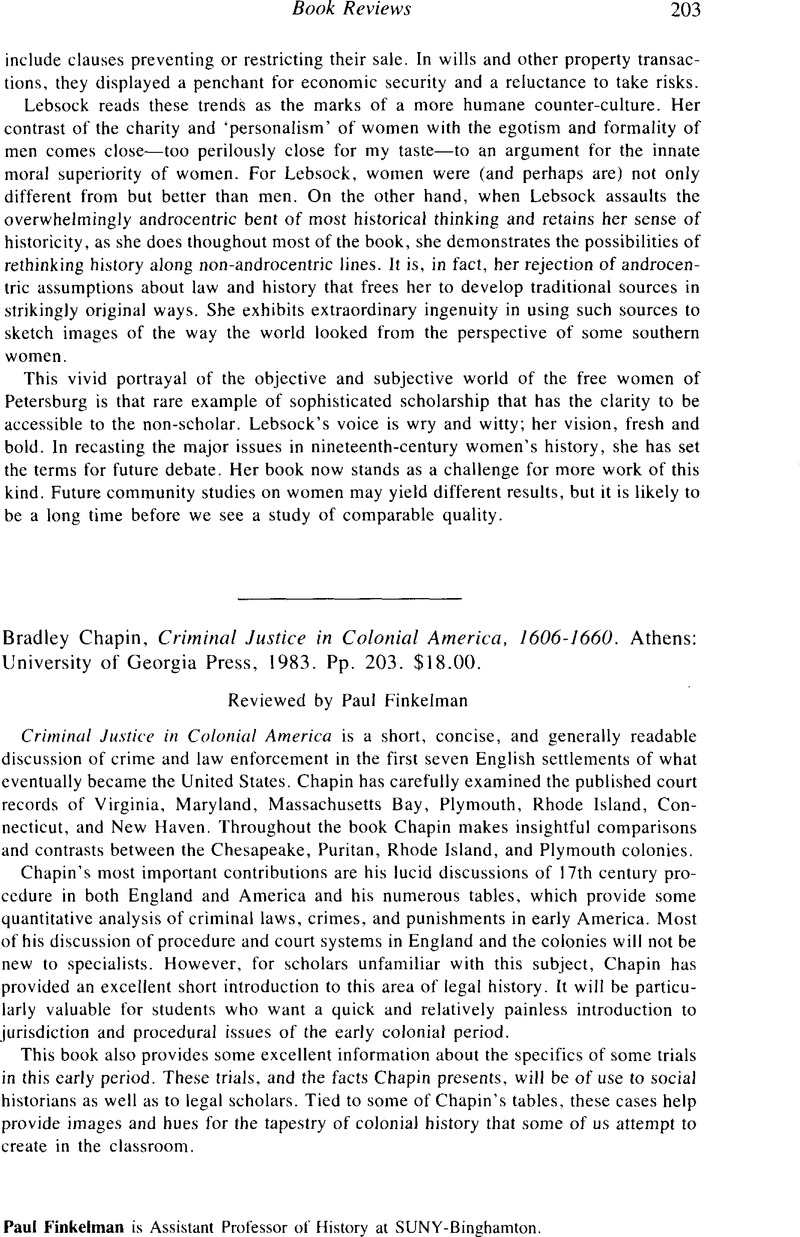No CrossRef data available.
Published online by Cambridge University Press: 28 October 2011

1. The table begins with Virginia, in 1621, thus ignoring the first fourteen years of the colony. There are in fact some court records for the period after 1631. For example, Susie M. Ames's two volumes on Courts in Accomcak-Northampton Counties cover the period 1632-1645. And, although H.R. Mcllwaine's edition of the Minutes of the Council and General Court of Colonial Virginia, 1622-1632, 1670-1676 appears to only cover a few years of Chapin's study, the volume actually contains scattered cases from the 1640s and 1650s which might have been used in this and other tables. It is unclear in this, and many other tables, how Chapin gathered his information.
2. Starchey, William, For the Colony in Virginae Britannia: Lawes Divine, Morall and Martiall, Flaherty, David H., ed. (Charlottesville: University of Virginia Press, 1969Google Scholar). See also Konig, D., ‘“Dale's Laws” and the Non-Common Law Origins of Criminal Justice in Virginia’, 26 American Journal of Legal History 354 (1982CrossRefGoogle Scholar). These laws are also discussed in Morgan, Edmund, American Slavery, American Freedom (New York: Norton, 1975) 79–80Google Scholar. My guess is that Chapin's data for Virginia covers the period after the demise of the Virginia company, which occurred in 1624. This may explain why Chapin appears oblivious to Kingsbury, Susan, ed. The Records of the Virginia Company of London (Washington, 1906-1935Google Scholar).
3. Discussed in Morgan, supra note 2, at 124.
4. Bradford, William, Of Plymouth Plantation (New York, 1981) 337Google Scholar.
5. Morgan, supra note 2, at 73.
6. Bradford, supra note 3, at 355-56.
7. Morgan, supra note 2, at 74 describes the rather horrid executions of Virginia colonists for running away to the Indians in 1612.